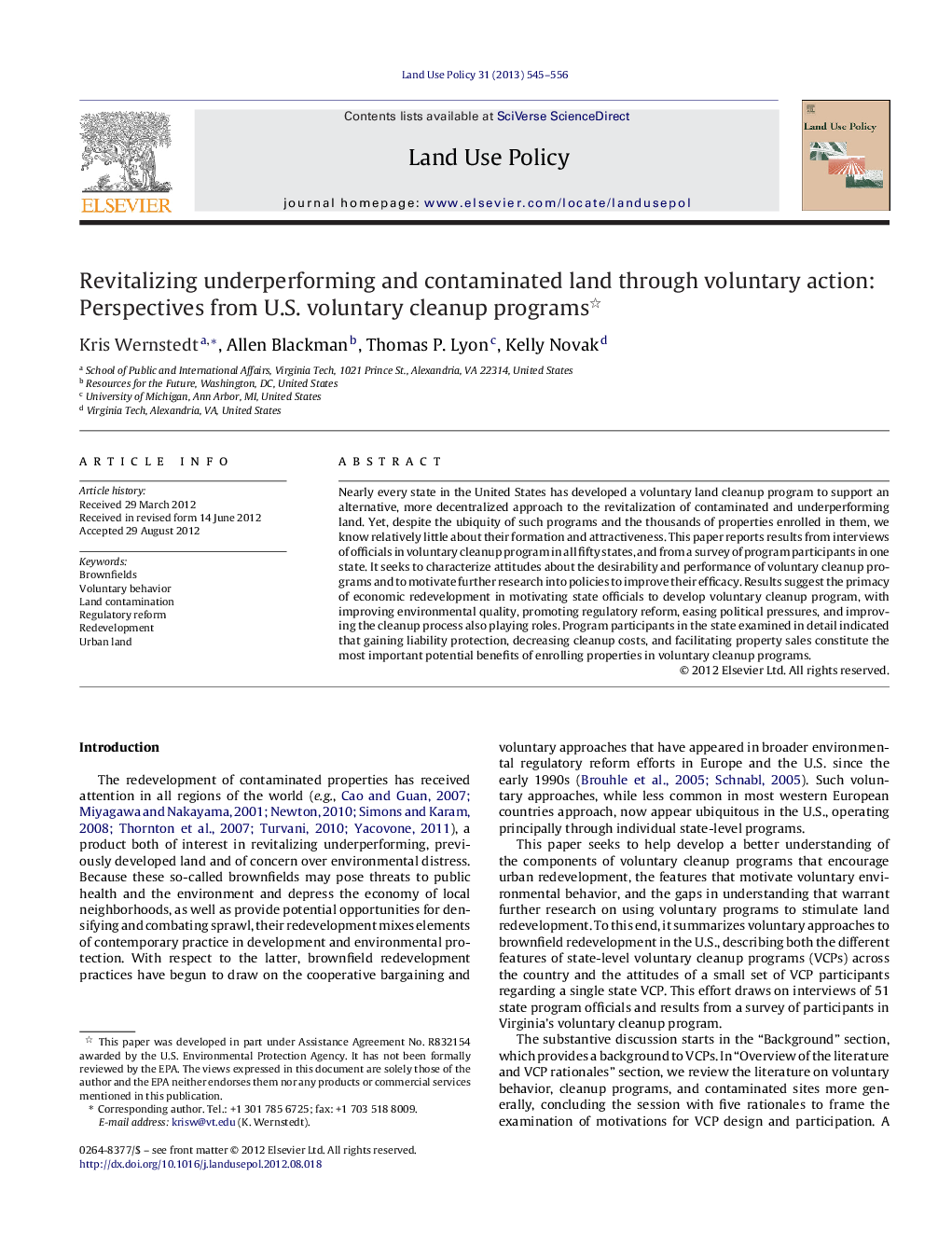| کد مقاله | کد نشریه | سال انتشار | مقاله انگلیسی | نسخه تمام متن |
|---|---|---|---|---|
| 93111 | 160112 | 2013 | 12 صفحه PDF | دانلود رایگان |
Nearly every state in the United States has developed a voluntary land cleanup program to support an alternative, more decentralized approach to the revitalization of contaminated and underperforming land. Yet, despite the ubiquity of such programs and the thousands of properties enrolled in them, we know relatively little about their formation and attractiveness. This paper reports results from interviews of officials in voluntary cleanup program in all fifty states, and from a survey of program participants in one state. It seeks to characterize attitudes about the desirability and performance of voluntary cleanup programs and to motivate further research into policies to improve their efficacy. Results suggest the primacy of economic redevelopment in motivating state officials to develop voluntary cleanup program, with improving environmental quality, promoting regulatory reform, easing political pressures, and improving the cleanup process also playing roles. Program participants in the state examined in detail indicated that gaining liability protection, decreasing cleanup costs, and facilitating property sales constitute the most important potential benefits of enrolling properties in voluntary cleanup programs.
► Voluntary cleanup programs (VCPs) are important for U.S. brownfield redevelopments.
► We interview state VCP officials and survey participants about VCP drivers and benefits.
► State officials appear motivated to develop VCPs to promote economic development.
► Participants value liability protection, lower costs, and property sales from VCPs.
Journal: Land Use Policy - Volume 31, March 2013, Pages 545–556
